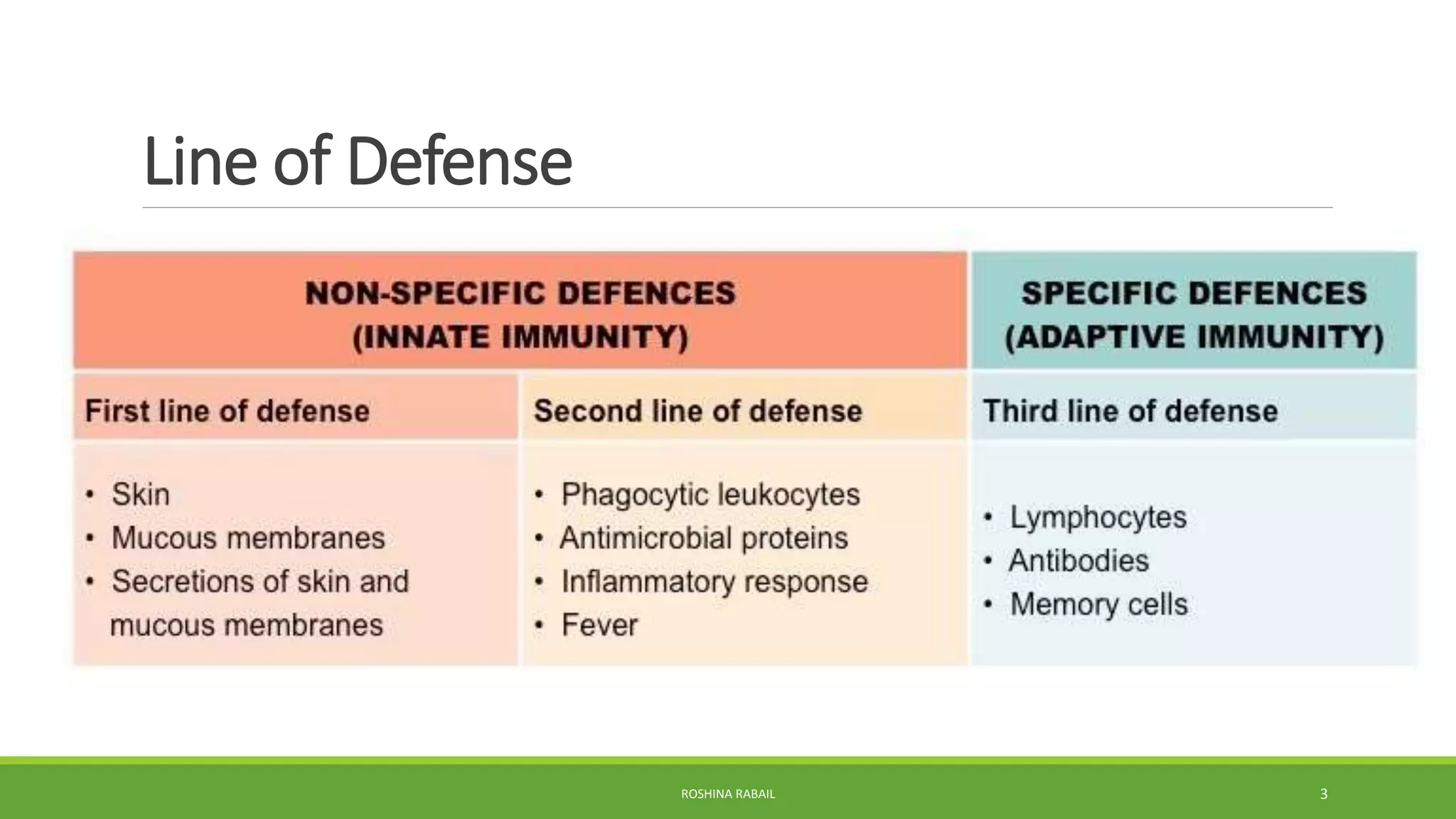The immune system can be divided into three lines of defense against pathogens:
1. The first line of defense are physical and chemical barriers like the skin and mucous membranes that prevent pathogens from entering the body.
2. The second line of defense is the innate immune system, which includes non-specific cells and mechanisms like phagocytes and complement proteins that attack foreign substances.
3. The third line of defense involves adaptive immunity including B and T lymphocytes that produce antibodies and mount a specific immune response against pathogens.























